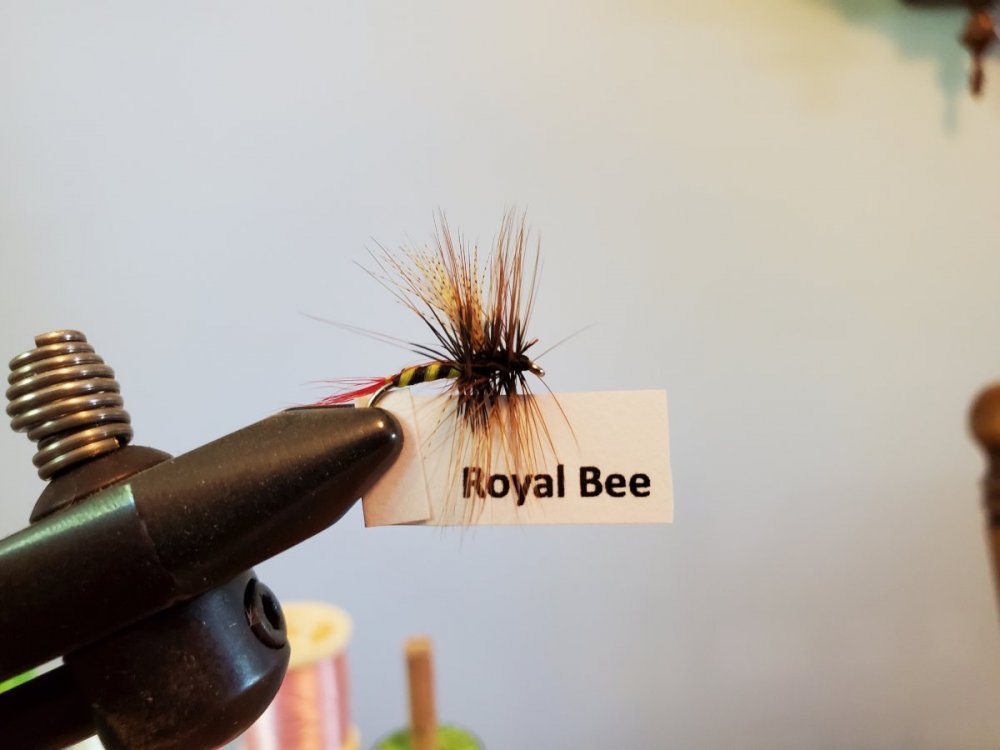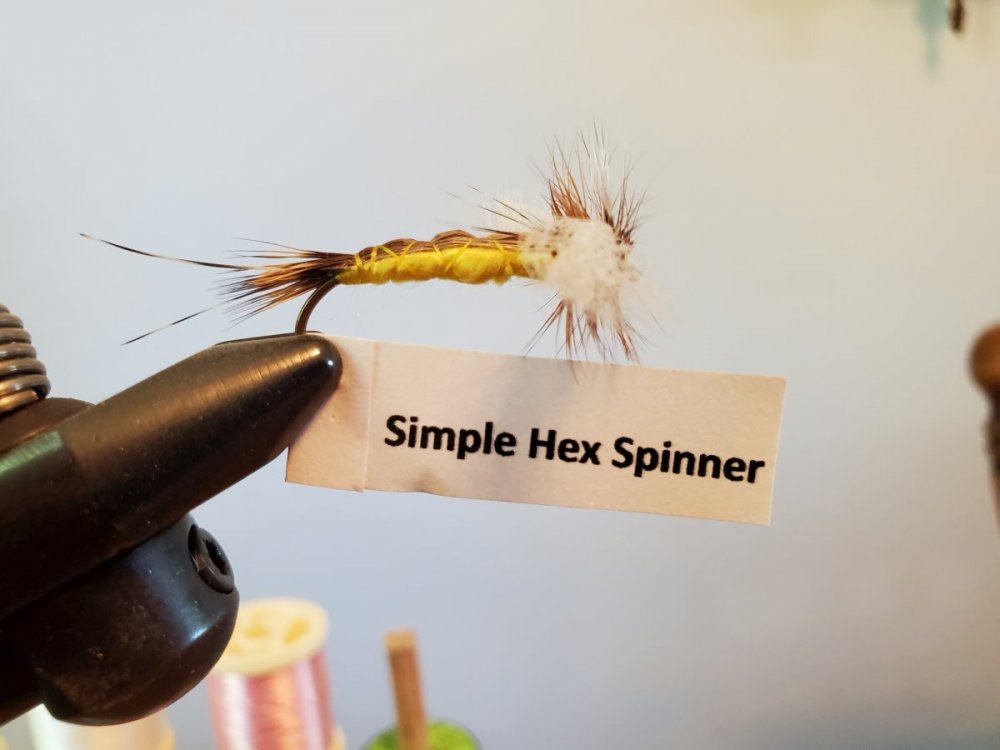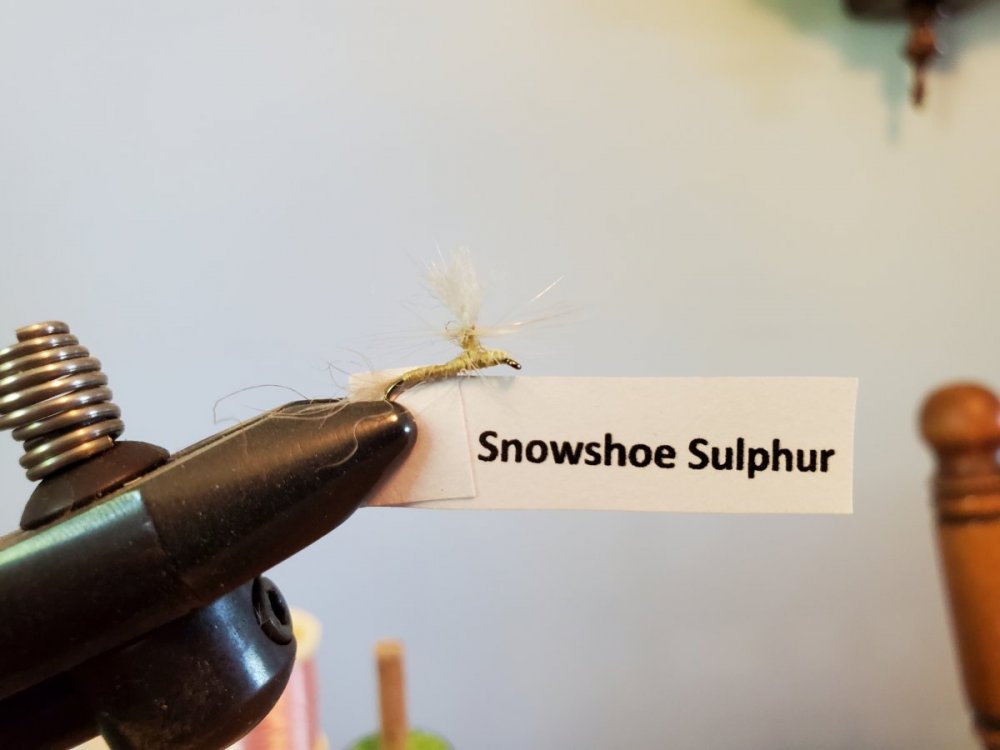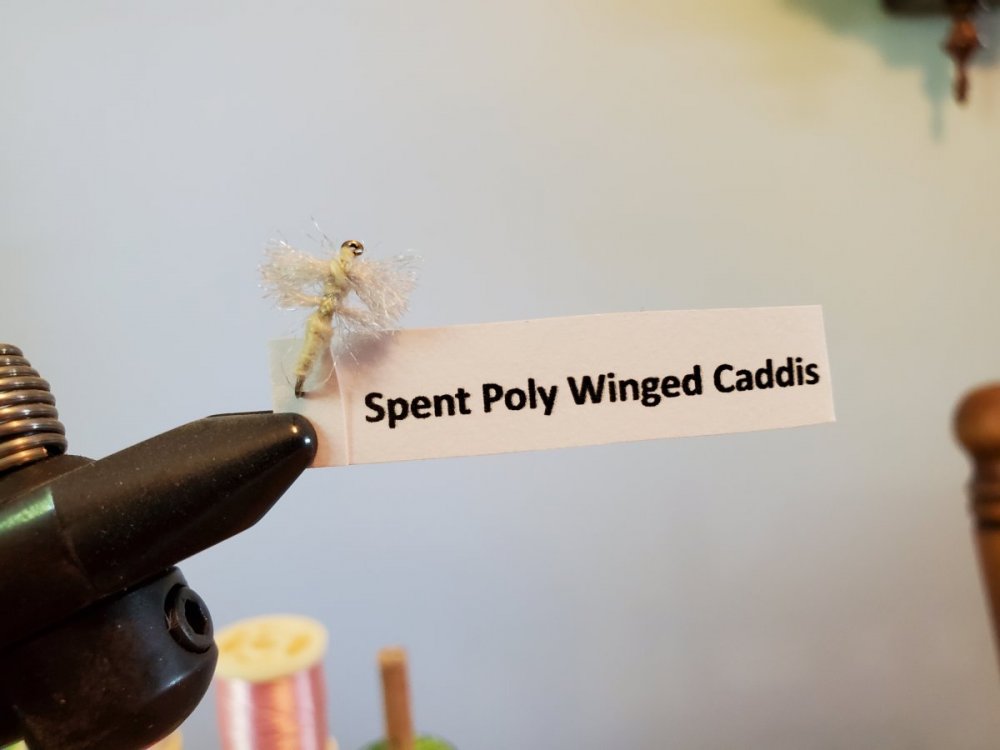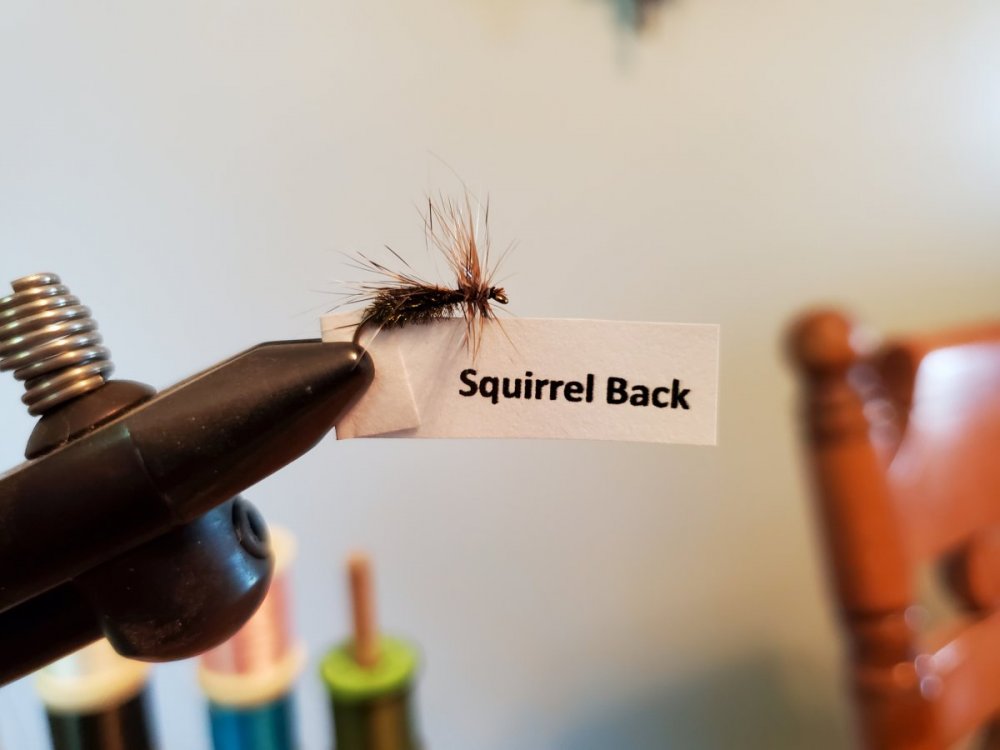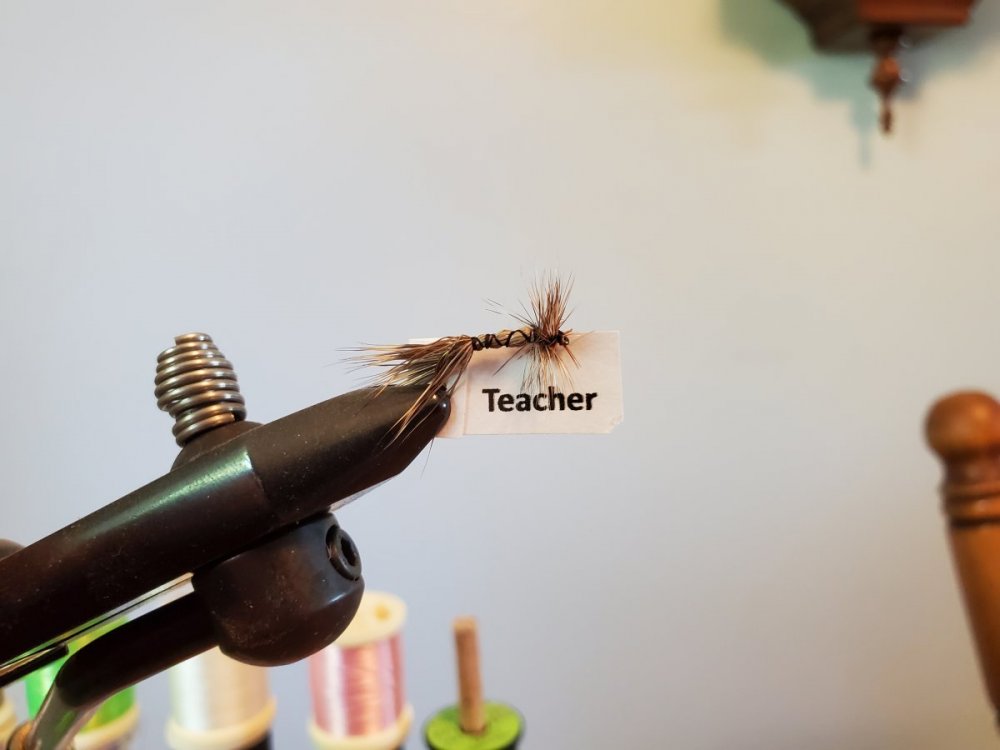I've been postings for dries lately (my weaker area of tying!). Here is a combination of a dry and its related nymph wet fly. Again, from Tom Deschaine's fine work as a fly historian. Enjoy!
Strawman (dry) - Paul Young designed both patterns shown here in the 1930's. Paul was a recognized tyer and rod builder from Detroit. The nymph version was developed first and was to be fished either wet or dry. He saw that other fisher were having great success fishing the nymph dry that he developed this dry pattern. Each version can be tied in four versions - black hair with gold ribbing (shown on the dry), light hair with yellow floss ribbing (shown on the nymph pattern), brown with black ribbing, and white with silver ribbing. The only difference he made in the designs was a lighter hook and longer cut deer hair for the dry version.
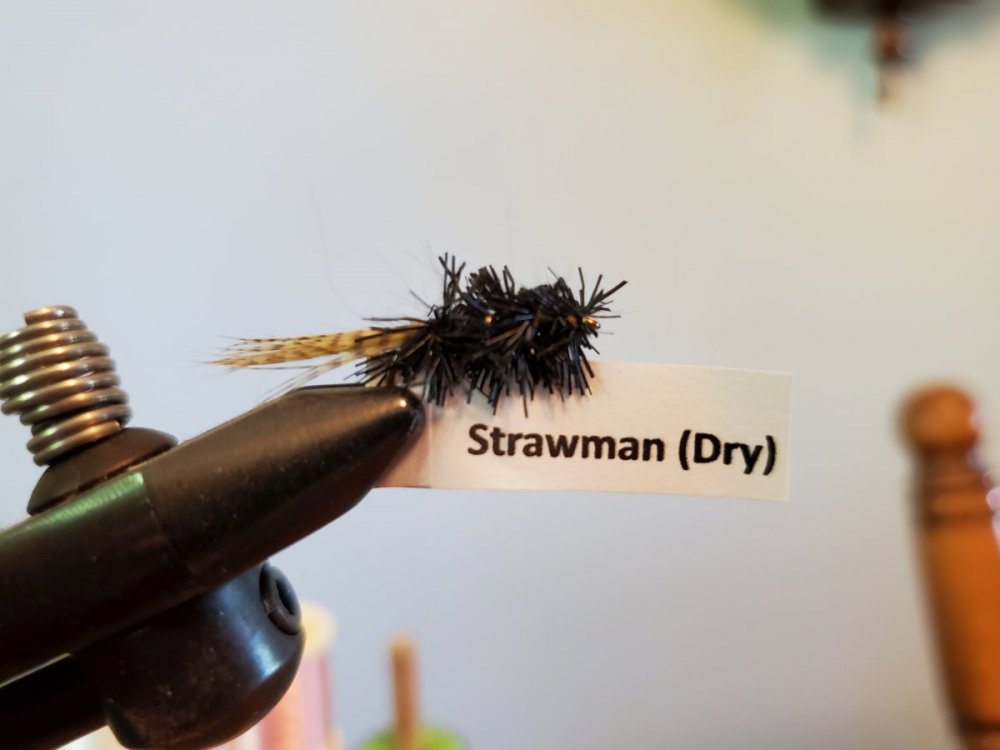
Hook - dry fly, 10-14
Thread - brown
Tail - mallard flank fibers, tied long
Rib - gold flat tinsel
Body - black deer hair. spun with spaces between the spun hair for the rib and cut to ~ the hook gap length
Strawman (Nymph) - Similar to the above. Also, Paul originally tied this pattern without a rib and on a standard nymph hook. It is a variation of a fly from Canada that Paul's friend, W. O. Stoddard. Also, he originally fished this fly dry and changed to a wet after the pattern had taken on water. This pattern also could be tied in the four color combinations. This fly is a cased caddis imitation.

Hook - standard nymph hook, 12-14
Thread - brown
Tail - mallard flank, tied long
Rib - yellow silk floss
Body - light deer hair, spun (no separations here) and trimmed to about 1/2 a gaps length





